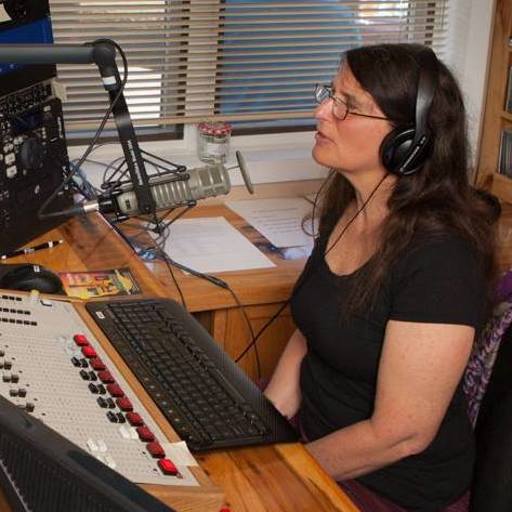Originally published on August 5, 2019 10:05 am
The Mountain West has disproportionately high rates of depressive disorders and suicide. Researchers are trying to find out why. Turns out, the mountains themselves might have something to do with it.
Back in 1991, a crew of eight people stepped into a series of sealed glass rooms in Arizona. They didn’t come out for two years and 20 minutes.
“We knew it was a leap into the unknown,” says Mark Nelson, who was among the crew. “It was a pretty radical experiment.”
It was called Biosphere 2, and it was a privately funded experiment in recreating a mini version of our ecosystem. There was space for a rainforest, a coral reef, savannah and more, plus living quarters. One of the goals was to see if they could make all of their food. Nelson says it was a beautiful feeling living in such a condensed world.
“I think all of the crew, we fell in love with our world,” he says. “Everything made sense in Biosphere 2.”
Except there was a problem. At first, oxygen made up about 21% of the air. But as the months went by, that level dropped, a lot of it unexpectedly trapped in the building’s unsealed concrete. It got all the way down to about 14%, which is about the oxygen availability you’d expect atop a 13,000-foot mountain.
“We were doing like the slowest damn mountain climb ever,” says Nelson. “I think I didn't realize it because we kind of were like the lobsters in the pot.”
But eventually the crew started feeling pretty bad. They were low energy. Several developed sleep apnea. Three started talking to therapists on the phone. Everyone ended up getting psych evaluations.
“We had both the psychiatrists do extensive interviews with us by phone and objectively, we were tested not to be depressed,” says Nelson. “But subjectively you can feel depressed.”
Finally, Mission Control injected a bunch of oxygen into one of the rooms.
“The crew went down there and people started laughing like mad and running around, and I realized that I hadn't heard anybody run for a really long time,” he says. “It was amazing, the physiological change.”
There are a lot of obvious reasons that Nelson and his crew members’ experience is not at all representative of the real world, from their specialized diet to the fact that this was a group of people that basically said, “Sure, we’ll live in a box for two years.”
But in terms of oxygen having real effects on their bodies, they might be a good example of something researchers think is happening across our region.
“I think that's a totally appropriate example,” says Brent Kious, a psychiatrist and assistant professor with the University of Utah.
He’s among a group of researchers who think that the lack of oxygen at altitude could actually be messing with people’s mental health, and that it might even help explain the higher rates of suicide and depressive disorders observed in mountainous areas.
Basically, the thinking goes, the brain needs oxygen in order to function. And it needs more oxygen to do things like communicate between the parts of the brain that handle reasoning and emotion.
“They're very close, very complicated connections between those parts, and we know from a lot of other studies that they're disrupted in many people with depression,” says Kious. “So, hypoxia might contribute to that in a couple of ways.”
For example, by withholding energy from the frontal cortex, the reasoning part of our brains, which could impact the ability to regulate emotions. Another idea is that a chronic lack of oxygen messes with serotonin production, also important for mood. None of this is certain.
“No, I think it is still a fairly controversial hypothesis among people who are aware of it,” he says.
And a lot of people aren’t even aware of it. But a growing number of studies on people, animals and health statistics back up the idea.
For example, research in Peru on 368 electrical workers concluded that the ones stationed at about 10,000 feet had more symptoms of depression and anxiety than their sea-level colleagues. Researchers studying 60 Marines found that, before starting a month of altitude training, they were less moody than college kids. After the training, however, they were as depressed and angry as psychiatric outpatients, and remained that way for as long as three months.
Similarly, Kious looked at a group of about 3,700 medical students tested before and after beginning residency and found a significant difference in those who moved to locations with elevations of at least 3,000 feet.
“Folks who moved to higher elevation had increased odds of exhibiting a clinically significant depression score,” he says. “And there was also a significant increase in people reporting that they had had suicidal thoughts among those who had moved to higher elevation.”
A study on more than 9 million people, including more than 22,000 suicide deaths, found that suicide risk rose with altitude and that patients with three sources of chronic oxygen deprivation (smoking, lung disease and altitude) were almost four times more likely to die by suicide than those without any.
In rodents, scientists have shows that oxygen deprivation like the kind experienced at altitude is connected to disrupted sleep and depression-like behaviors including less movement and slower reactions. A recent study in rats suggests it even makes common antidepressants less effective.
Zooming out to the larger scale, scientists have repeatedly found statistical connections between altitude and suicide — among people with bipolar disorder and without, among deaths by firearm and not by firearm, among people in the U.S., Spain and South Korea, and after controlling for things like income and population density.
Emmy Betz, an emergency physician and researcher at the University of Colorado School of Medicine, doesn’t dispute that there’s something going on with altitude.
“There clearly are differences in suicide rates by altitude and that's a trend that has been seen and documented over a number of years,” says Betz, who just wrapped up a stint on the Colorado Suicide Prevention Commission. “The question is: Is it the altitude alone? Or is it something else? Or, most likely, I think it's a mix of contributing factors.”
As she and others have written in a number of publications, there are limitations to looking at the question of altitude and mental health by aggregating public health data.
Such statistics can’t show factors like the prevalence of a fix-it-yourself mentality in a mountain community, or how much small-town dynamics might influence a person’s decision to seek help because, for example, they don’t want people to recognize their car parked in front of the clinic.
To get a more granular look, Betz studied the records of almost 9,000 people who died by suicide in 15 states including Colorado and Utah and grouped them by altitude. She found that those who died at altitudes higher than 6,500 feet were different in a number of ways from those at low altitude.
They were less likely to live in an urban area, more likely to have been intoxicated when they died and more likely to have been in a depressed mood according to relatives and friends. A slightly higher percent of high-altitude suicides involved firearms. And people who died at high altitude were also more than three times as likely as their low-altitude counterparts to have had recent problems with health, money, relationships or jobs, says Betz, “Suggesting that it wasn't just the altitude explaining the difference in suicide rates.”
Essentially, even if altitude does affect a person’s suicide risk, it’s only a little sliver of the picture.
“That may feel like a very unsatisfying answer in that it’s not as neat or as clean as saying, ‘Well, altitude is the thing to blame,’” says Betz. Even so, she isn’t ruling it out as a possible contributor.
“We certainly should be looking at how antidepressants might work differently in high altitude and so forth," she says. "Does oxygen supplementation help?”
Or, maybe there are drugs that might counteract the effects of high altitude on the brain. For example, Kious and his colleagues conducted a short, very small study on 15 patients in Salt Lake City with major depressive disorder for whom antidepressants didn’t help, and concluded that adding creatine and tryptophan to patients’ daily intake could improve symptoms.
“We're really dedicated to understanding why it is people in Utah and surrounding states have a higher risk of depression and suicide,” says Kious. “But we're also really excited about it because we think it's ultimately going to point us towards some pretty specific treatments for depression that could help people who are living at high altitude but also help other people with depression who are not living at high altitude just by really helping us understand the etiology of the disorder.”
According to both Betz and Kious, there’s one thing we shouldn’t do: Send people away from the mountains.
“Right now, at least, I think the answer is not to tell people to move away from high altitude,” says Betz. “It's to think about how do we better serve those communities and meet their needs.”
In addition to the fact that a lot of people don’t have the option to move, Kious adds, “We like to point out that there's this paradox that we have high rates of depression and suicide and we're also some of the happiest people in the country.”
A recent Gallup poll ranked states according to wellbeing and concluded that Wyoming, Montana, Utah and Colorado are among the top 10 happiest states in the country.
If you or someone you know may be considering suicide, contact the National Suicide Prevention Lifeline at 1-800-273-8255 (En Español: 1-888-628-9454; Deaf and Hard of Hearing: 1-800-799-4889) or the Crisis Text Line by texting HOME to 741741. In Colorado, you can also call 1-844-493-TALK (8255), text TALK to 38255, or access chat via www.coloradocrisisservices.org, available 24/7.
This story was produced by the Mountain West News Bureau, a collaboration between Wyoming Public Media, Boise State Public Radio in Idaho, KUER in Salt Lake City, KUNR in Nevada and KRCC and KUNC in Colorado.
Copyright 2020 KUNC. To see more, visit KUNC.








